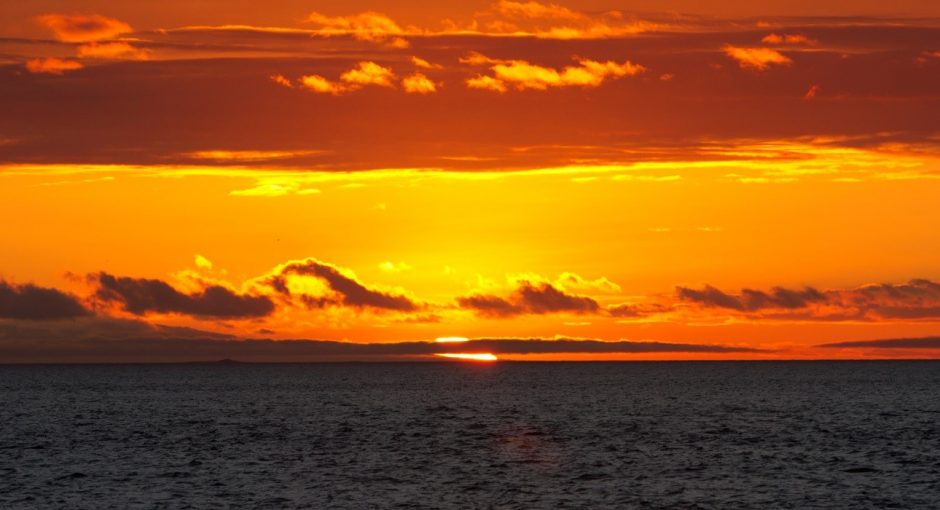
Tips for Photographing Sunsets in the Galapagos Islands
If you’re headed to the Galapagos Islands on a boat-based expedition, you’ll no doubt have the opportunity to photograph exquisite sunsets during your time on the water.
Follow these simple steps to get a colorful, dramatic sunset each and every time.
- Being on the water gives you a great view of the horizon, which allows you to capture the subtle nuances of low-level clouds as the sun dips below. Thus, each afternoon, as you return to your vessel, anticipate what could be a stunning sunset, even if there are very few clouds in the sky.
- Next, consider your camera gear. To get a shot like the one above, I always put on some sort of telephoto lens. If you have a point and shoot, expect to be in the 5x to 15x zoom range to really magnify the clouds that could be small to the naked eye. One would think that for a sunset shot, you’d want a wide angle to capture the entire sky, right? Truth be told, I’ve found it to be the opposite. By isolating the sun, horizon, and small clouds, you’re really getting more color, better texture, and a more captivating shot.
- Once you are in position, begin by focusing on the texture-rich clouds just above the sun. These are the ones that have strong contrast of light and dark, and will allow your camera to focus quickly. See, most cameras rely on contrast when using autofocus, so finding a patch that is both light and dark is key. This also allows you to bring out the rich color of the clouds (i.e., more oranges and reds appear instead of yellows and whites). If you were to instead focus on the water, or something darker, you’d find that the clouds become “blown out”, which is another way of saying way too bright. You’d lose all that beautiful texture and contrast, in favor of an illuminated ocean. You don’t need well-lit water, so focus on the bright spots of the clouds to help balance them out for maximum effect.
- Once you have gotten a few shots that you’re happy with, and that have that balance of color and contrast I’m talking about, start experimenting with different zoom levels. Try starting all the way out…gradually zooming in a little, taking a shot, then zooming a little more, and taking a shot, and so on. I often find that for certain sunsets, zooming quite far in can yield the most interesting shots. The key is to experiment and see what works for you and your exact scene.
- While experimenting, choose the exact same focus point for several in a row. Do this by holding down your shutter half-way, which locks in focus and lighting, so that you’re free to recompose your shot with a compelling composition. Typically I adhere to the rule-of-thirds, and divide the scene with 1/3 water (or land) and 2/3s sun and sky.
- Next, try different focus points each time and examine the differences. This is one of the best ways to become familiar with what different exposures do to high contrast scenes. You’ll be amazed at the differences.
- Finally, continue to photograph the entire sequence of the sunset, for colors can change as the sun gets lower and eventually disappears. And sometimes, the clouds can take on a spectacular appearance just after the sun has gone below the horizon. Patience and practice is a virtue!
The Galapagos Islands is no doubt one of the best places in the world to photograph sun-setting-on-ocean scenes, and you’ll likely have several opportunities for exquisite sunsets over the course of your adventure. But, these tips and tricks above actually translate well to any sunset. So, keep these in mind no matter where in the world you may be.
Now go forward and give it a shot,

Court
Leave a reply